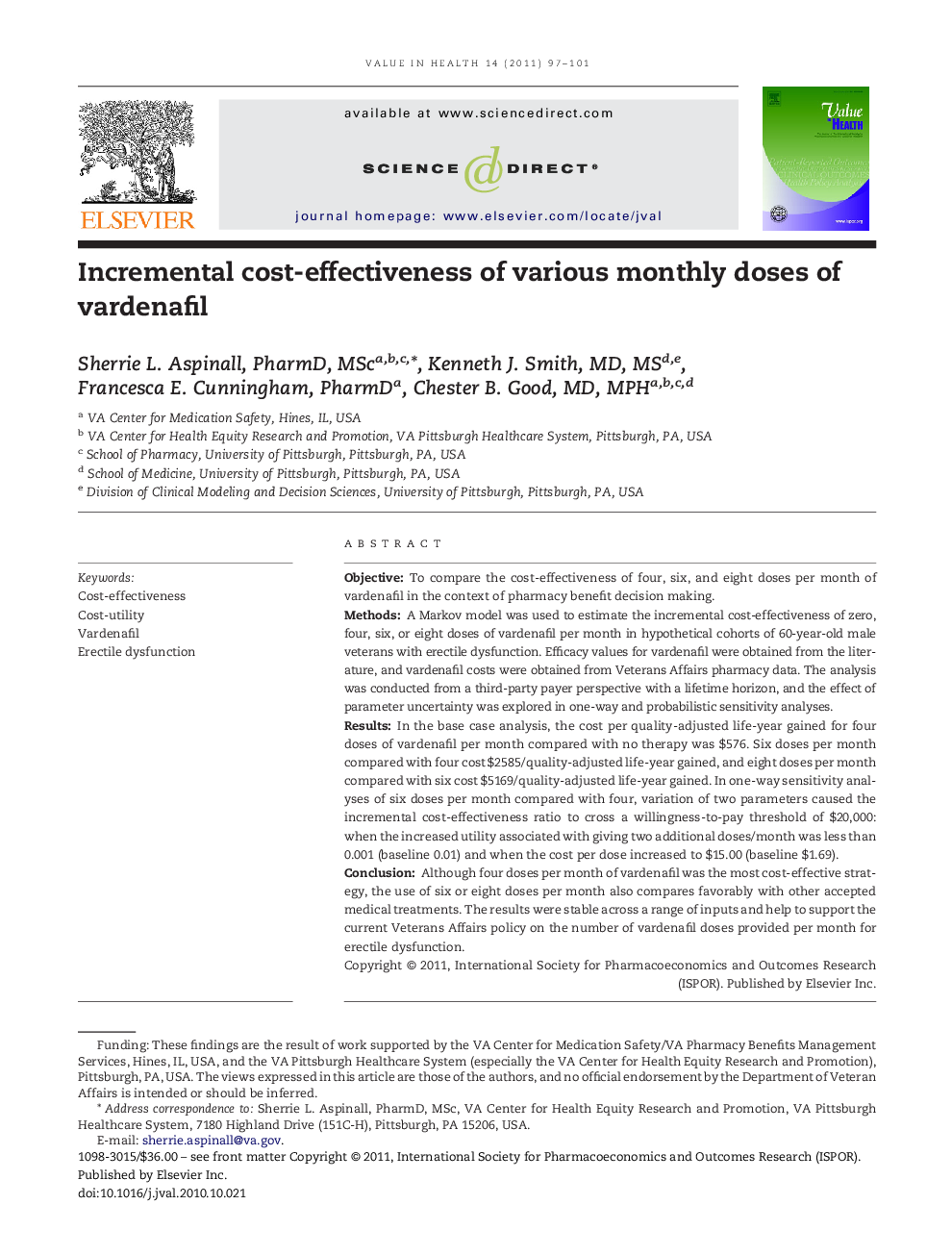| Article ID | Journal | Published Year | Pages | File Type |
|---|---|---|---|---|
| 991421 | Value in Health | 2011 | 5 Pages |
ObjectiveTo compare the cost-effectiveness of four, six, and eight doses per month of vardenafil in the context of pharmacy benefit decision making.MethodsA Markov model was used to estimate the incremental cost-effectiveness of zero, four, six, or eight doses of vardenafil per month in hypothetical cohorts of 60-year-old male veterans with erectile dysfunction. Efficacy values for vardenafil were obtained from the literature, and vardenafil costs were obtained from Veterans Affairs pharmacy data. The analysis was conducted from a third-party payer perspective with a lifetime horizon, and the effect of parameter uncertainty was explored in one-way and probabilistic sensitivity analyses.ResultsIn the base case analysis, the cost per quality-adjusted life-year gained for four doses of vardenafil per month compared with no therapy was $576. Six doses per month compared with four cost $2585/quality-adjusted life-year gained, and eight doses per month compared with six cost $5169/quality-adjusted life-year gained. In one-way sensitivity analyses of six doses per month compared with four, variation of two parameters caused the incremental cost-effectiveness ratio to cross a willingness-to-pay threshold of $20,000: when the increased utility associated with giving two additional doses/month was less than 0.001 (baseline 0.01) and when the cost per dose increased to $15.00 (baseline $1.69).ConclusionAlthough four doses per month of vardenafil was the most cost-effective strategy, the use of six or eight doses per month also compares favorably with other accepted medical treatments. The results were stable across a range of inputs and help to support the current Veterans Affairs policy on the number of vardenafil doses provided per month for erectile dysfunction.
